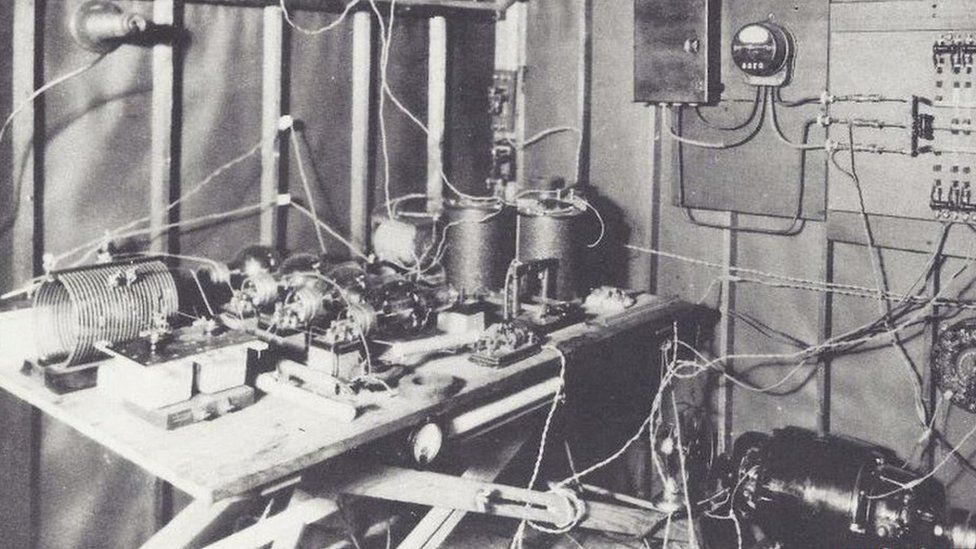Homage to first shortwave trans-Atlantic radio broadcast
- Published

Radio enthusiasts have recreated the first ever trans-Atlantic shortwave broadcast - 95 years after it connected Ardrossan and the United States.
Members of the Radio Society of Great Britain took part at the North Ayrshire coastal town on Sunday.
They exchanged broadcasts with the American Radio Relay League (ARRL) and the Radio Club of America in Connecticut.
The groups said the first transmission helped pioneer global communications.
They used modern and historical equipment to recreate the broadcasts.
Len Paget from the Radio Society of Great Britain (call sign: GM0ONX) said: "The frequencies used for the transmission were thought at the time to be useless for long distance communications and were given to radio experimenters as they were thought to have little or no commercial value.
"The success of these experiments showed that trans-Atlantic transmissions could be achieved using short wave frequencies with a power equivalent to that used by your toaster in kitchen. "
He says the successful test back in 1921 proved that world-wide communication could be achieved using short wave.
"The BBC World Service which was to follow in 1932 would heavily rely on the radio frequencies pioneered by radio amateurs of that time," he explained.
The radio amateurs involved in recreating the pioneering broadcast believe technology we rely on today is a direct descendant of the groundbreaking work of the "garage tinkerers" of almost a century ago.
Tom Gallagher of the ARRL (call sign: NY2RF) said anyone who owns a smartphone holds "the most powerful communications device yet created".
"It has three separate transmitters and receivers - cellular, bluetooth and wifi. All of that is wireless technology.
"We are standing on the shoulders of giants who worked with their own resources and ingenuity."
Is amateur radio still relevant today?
Jason O'Neill (call sign: GM7VSB) points to three examples where amateur radio operators have provided essential communications:
- The radio operator on the Falkland Islands "who was able to break the news of the Argentine invasion back in the 80s when all government communication channels had been taken out"
- The amateurs "helping out with the search for the missing Malaysian Airlines MH370 Flight, where emergency communications were provided for the government"
- Tim Peake, the first British Astronaut on ISS, used amateur radio to communicate live with schools all over the UK in a bid to engage pupils with science.